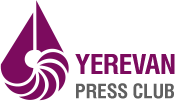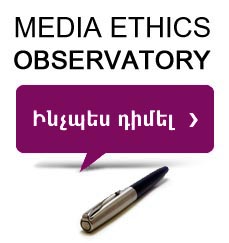Yerevan Press Club Report “Armenian Media in 1999”
The humanity has officially made its farewells to the 20th century, and despite the arguments on whether we have entered the third millennium or not, it is by all means reasonable to make a sum-up: what does the media institution look like in the third Armenian Republic at this historical border point? Today Armenia has an already established media image, and therefore, even if those who suggest that millennium celebration should be put off till the end of the year 2000 are right, it is obvious that no significant changes will occur within the remaining months.
MEDIA AUDIENCE
One of the main tendencies that marked the post-communist decade of Armenian media history is their consistent and enduring alienation from the society, or rather, its vast masses. This process was especially conspicuous in 1999, manifesting itself in a most obvious way by a drastic reduction of the printing runs of the newspapers. The edition sold in more than 1,000 copies is already considered to be respectable. This indicator looks incredibly low even when compared to any of the previous years, including the economical supercrisis years 1993-1994 or the politically and socially stagnant year 1997.
Appealing to the small printing runs has become so trivial that it is even embarrassing to use it in a discourse claiming to be called “an expert report”. But figures are obstinate, therefore let us attempt to examine once more the reasons of the reduction of interest towards the printed word. Previously two of them were most commonly cited: first, reduction of the purchasing power of the population and second, the deteriorating professionalism of the journalists. Yet the situation that we face to today shows that the above mentioned factors do not account for everything, and a more profound analysis is needed.
The point is the purchasing p One of the main tendencies that marked the post-communist decade of Armenian media history is their consistent and enduring alienation from the society, or rather, its vast masses. This process was especially conspicuous in 1999, manifesting itself in a most obvious way by a drastic reduction of the printing runs of the newspapers. The edition sold in more than 1,000 copies is already considered to be respectable. This indicator looks incredibly low even when compared to any of the previous years, including the economical supercrisis years 1993-1994 or the politically and socially stagnant year 1997.
Appealing to the small printing runs has become so trivial that it is even embarrassing to use it in a discourse claiming to be called “an expert report”. But figures are obstinate, therefore let us attempt to examine once more the reasons of the reduction of interest towards the printed word. Previously two of them were most commonly cited: first, reduction of the purchasing power of the population and second, the deteriorating professionalism of the journalists. Yet the situation that we face to today shows that the above mentioned factors do not account for everything, and a more profound analysis is needed over reduced long time ago, and in as far as 1992 the print media became inaccessible for the majority of the population. The number of Armenian citizens who can afford a daily purchase of newspapers remains relatively stable. Meanwhile, the cumulative printing run of dailies persistently goes down. In 1995-1996 this was given one explanation: the energy crisis is being overcome, and the population is gaining more access to television, giving up the print media as the main information source.
Yet the decrease in printing runs did not stop after 1996 either. Today the cumulative printing run of the dailies sold out does not exceed 15,000 copies, which is about 10 times less than the number of the Armenian citizens able to use the services of newspaper kiosks every morning without great damage to the family budget.
Today the thesis about the journalists’ low professionalism does not sound convincing either. In early 1990s a swift and somewhat artificial change of generations really took place in Armenia media. The foreground was represented by inexperienced but easily adjusting to the new information climate journalists. This could not but tell on the qualities of the publication, TV and radio programmes. Mechanical reproduction of the recordings, careless treatment of the word, distortion of facts became the main signs of the journalism of the first years of independence. Yet gradually the quantity yielded to quality. From the enormous flow of unskilled newcomers a group of professionals of post-Soviet birth appeared. However, although the media are replenished every year by journalistic materials which are raw but nonetheless ambitious and careless towards the fact, the word and the idea, although bad quality information percentage in the media exceeds all the permitted civilized norms, the image of Armenian journalism is more and more determined by a stable and respected group of names, by which quite good media production is signed.
During the last decade certain journalistic training traditions have also been formed. If in early 1990s the Armenian information consumer had only to sigh with nostalgia about the professional school of the “Garun” magazine in 1980s or the “Avant-garde” newspaper in 1970s, now we can speak about new trendsetters. The “Azg” daily has adopted and developed the best traditions of the media of the Armenian Diaspora. The “Golos Armenii” newspaper has undergone an interesting transformation from a quality but greatly tabooed journalism of the Soviet times into an edition which adheres to the same profundity but, unlike its predecessor, does not recognize any authorities. “A1+” TV company has also taken the way of adopting and reconsidering professional traditions, adjusting the dynamics of Western information programmes to Armenian reality. “Aravot” daily and “AR” TV company have undertaken the creation of a unique journalistic school.
Summing up, it can be said that it is not quite correct to explain the falling interest of the audience towards Armenian media by the low professionalism, at least in the last three-four years.
MEDIA AND POLITICS
A number of features of modern Armenian media lead to think that the reduction of their audience is the direct consequence of the social function they perform nowadays. It should be noted that features listed below refer mainly to print media. In spite of the fact that the latter type of the media has smaller audiences that their electronic peers, and the information technology advancement makes the media market even more narrow, the newspaper still remains the main indicator of the media situation in each specific country.
The year 1999 has made the main feature of modern Armenian print media even more distinct: it is completely subordinated to the political realm. In other words, media in our country does not exist as an independent social institution and does not even attempt at fitting itself to the proud definition “the fourth estate”. All the more or less significant publications of Armenian newspapers in 1999 were conditioned by narrow political interests of those circles, which control and ensure the existence of the given edition. The interests of the society in the broad sense of the word were not taken into consideration in any way. This can be illustrated by the behavior of Armenian media during the main events of the year: elections to the National Assembly and the political crisis after shooting in the Parliament on October 27.
When covering the pre-election campaign, the vast majority of the newspapers saw their primary objective in a major propaganda effort to support “their” candidates and blocs. Meanwhile the ordinary voter had an urgent need for impartial, orienting information on the candidates for NA seats: too many new personalities and even parties popped up several months before the elections. The impetuous political endorsement (direct and indirect) in some media was rivaled by scandalous revelations and discrediting in others. The media monitoring results during the pre-election campaign (1-29 May, 1999) convincingly show, how biased the media was, as a consequence of which the real qualities and programmes of many candidates remained unknown to the voters. Even purely information occasions were used as propaganda; not only opinions, but also facts received contrasting colouring. Thus, the readers of “Hayots Ashkhar” and “Oragir” dailies could imagine themselves as living in different countries, owing to the huge differences in the way these two outlets selected, covered and interpreted the events. But for the actively utilized forms of material stimulation (unprecedented in Armenian election practice), the discouraged and disoriented citizens would have given up one of their most important constitutional rights, allowing the politicians to vote for themselves.
October 27 acted like an electric shock, sobering the Armenian journalists, and they demonstrated within a short period of time their true abilities, striving to be fast and fair in informing their compatriots about each turning of this fatal situation. The Armenian media behaved in this way also after the presidential elections of 1996, when they aspired to be an impartial chronicle-writers and to help the society to evaluate the tragedy of September 25 (collision of the oppositions and the authorities of the country). But, like three years ago, the period of professional romanticism proved to be short-lived in the autumn 1999. The moment the different political groups realized their interests and objectives in the changing conditions, the media received the next order for propaganda providing, for which the natural mission of observing and reporting was sacrificed. Rather soon after the shooting in the Parliament the media were divided into two wings. The former supported the ultimatums to RA President; advocated President’s resignation or restrictions of his power, called on to trust the police investigation on the case of October 27. The latter wing demanded the President to be decisive and non-compliant, insisted on the transparency of the investigation and doubted its objectivity. The shades of these two major attitudes depended on the definite aims of definite clans at a definite period of time.
The processes that involve now the Armenian media are not to be considered a realization of the party belonging principle. The party newspapers (in the classic sense of the word) are today in a minority, and, unlike the situation of 3 or 4 years ago, do not determine the image of Armenian journalism. “Haik” and “Ayzhm” have left the stage, “Yerkir” and “Azg”, the not-long-ago leaders of the print media market have abandoned their positions. Whereas the right of representing “the image of Armenian media” acquired the formally independent, inclined to conceal their funding sources newspapers, which have become more zealous in the defence of political interests than the party newspapers. According to the results of monitoring of the leading Armenian media in 1999 (January 1 – December 31, 1999), the same “Azg” and “Yerkir” which openly declare their party belonging proved to be less politically biased than a big number of their “independent” peers.
Such an obvious and consistent subordination of media to narrow group interests could not but affect the trust the readers have towards them. The little tricks aimed at concealing the true owners and clients of key outlets could work for a very short period of time. The majority of the population does not want to part with 100 drams to have a chance to read what they do not believe. The circle of the regular consumers of the print media has been maximally limited: they retain the interest of the immediate participants of the political intrigues (who make use of the newspapers as a way of corresponding), journalists themselves and all those people who have to do it by the nature of their jobs and who are usually called by the mysterious word “observers”.
The numbers of this circle constitute the approximate audience, and the orientation to its demands predetermines the content and the funding sources of Armenian newspapers. Such narrow orientation has pre-conditioned the drastic decreases in the printing runs. Certainly, the low purchasing power of the population, the growing emigration, and the lack of professionalism of the journalism – all these factors have their impact on this. Yet, as the analysis shows, the main factor is the refusal of the print media from the status of mass media and their transformation into a means of communication within the political establishment.
MEDIA AND THE STATE
Meanwhile, as the year 1999 showed, our state bodies are quite satisfied by the processes in the media and do not perceive the danger lying in the alienation of the media from the society. Otherwise, what else can account for the reluctance to take those obvious measures insisted upon by the journalists?
As it is well known, there is no absolute freedom and independence. For this reason, when speaking about the media freedom, not the ideal and unattainable in practice situation must be kept in mind but the most optimal model of media functioning in the society. Today this model presupposes existence of media as a business sphere. The more successful the business is, the greater the freedom of the journalism.
Schematically, the mechanism is rather simple. If this sphere of entrepreneurship is profitable, it is practised in a professional and interested way. The mundane interests, such as participation in political “games”; other spheres of entrepreneurship, etc. cease from dominating the idea of free dissemination (sale) of information. That is, the dominating interest is at this point the satisfaction of the consumer, which will eventually lead to the satisfaction of the society.Thus, practically the most important direction of the fight for the establishment of the freedom of speech in Armenia is presently the creation of necessary conditions, including legal ones, for the formation of a liberal market of information and strengthening the media as entrepreneurs.
In those countries, where the liberal market has already been formed and the media have established themselves as full-righted and quite successful participants, there may be no need for additional incentives in the form of specific laws and state programmes based on them. But the situation in Armenia is essentially different. The lack of firm democratic traditions and respect to the civil rights make the regulation of freedom and media responsibility absolutely necessary. Besides, legal incentives to transform the media from the appendage of political parties into entrepreneur structures are needed. To accomplish this the legal status of media should be precisely defined (in the law on media) as well as their place in the social and economic relationships. At the same time, the adoption of a law on state support to media is becoming urgent. This law is to legalize the practice of temporary tax privileges (instead of the miserable pittance from the state budget), and the capitalization of the media through certain measures, including the print and electronic media into the process of privatisation, as without property, including possession of fixed assets, the true participation in the market is impossible.
Alongside with the development of private (independent) media, transformation of the state-owned TV and radio into public companies (by adopting a broadcast law) and the elimination of the state-owned media as it is have long been needed. It has become axiomatic, that these media, surviving by the money of taxpayers are serving the interests of limited circle of personalities on the top of power hierarchy.
However, the carefully developed suggestions in both legal and practical spheres were ignored in 1999 as well. Moreover, an attempt was made to finally disrupt the basis for the freedom of speech in Armenia. As it has already been mentioned, only print media found itself under full control of the political establishment. Broadcasters (at least the most successful ones), owing to the support of international organization and certain activation of the advertising market in 1996-1998, have taken the business way and represent the prototype of the future free media. The media monitoring in 1999 (January 1 – December 31, 1999) confirmed the greater political impartiality of TV and radio as compared to print media. This relative independence of broadcasters could have been easily done with, if the governmental decree of increasing tariffs on frequency usage had come into force. The protestations of the private companies prevented the raised sword from falling, yet some of the officials have not as yet completely rejected the realization of this idea. The increase of tariffs would mean that the private TV and radio companies, solving the problem of survival every day as it is, will have to find sponsors, especially nowadays when, due to general economic stagnation, advertising contracts are getting hard to obtain. As a result the broadcasters may be subjected to the same lot which the print media have. Pre-conditions for this development appeared at the moment of political collisions after the events of October 27.
The pessimistic prospects are confirmed by public appearances of the NA deputies and other high-ranked officials, containing assaults on the media, demands to punish them, attempts to place the responsibility for practically all the unsolved problems in the country on them… There is only one step separating these words from actions!
At the juncture of millennia Armenian media have become prisoners of regressive trends and do not have visible prospects for changes for better. The symbol of 1999 is the first criminal procedure for journalistic activities in the third Armenian Republic (see the report of YPC Commission on Protection of Freedom of Speech, 1999). Even in such situations, when the immediate threat to the freedom of speech was obvious, scattered nature of Armenian media and their attachment to different political groups revealed itself. The latter succeeded in setting the media against each other, thus undermining the journalists’ actions aimed at defending their rights.
At the same time, even unsuccessful attempts at consolidation showed the potential force of a unified journalistic environment. This is probably the main reason for certain degree of optimism. Only professional solidarity of journalists, their firmness and resolution in defending the principles and corporate interests, as well as the support of international institutions may change the state of things.












